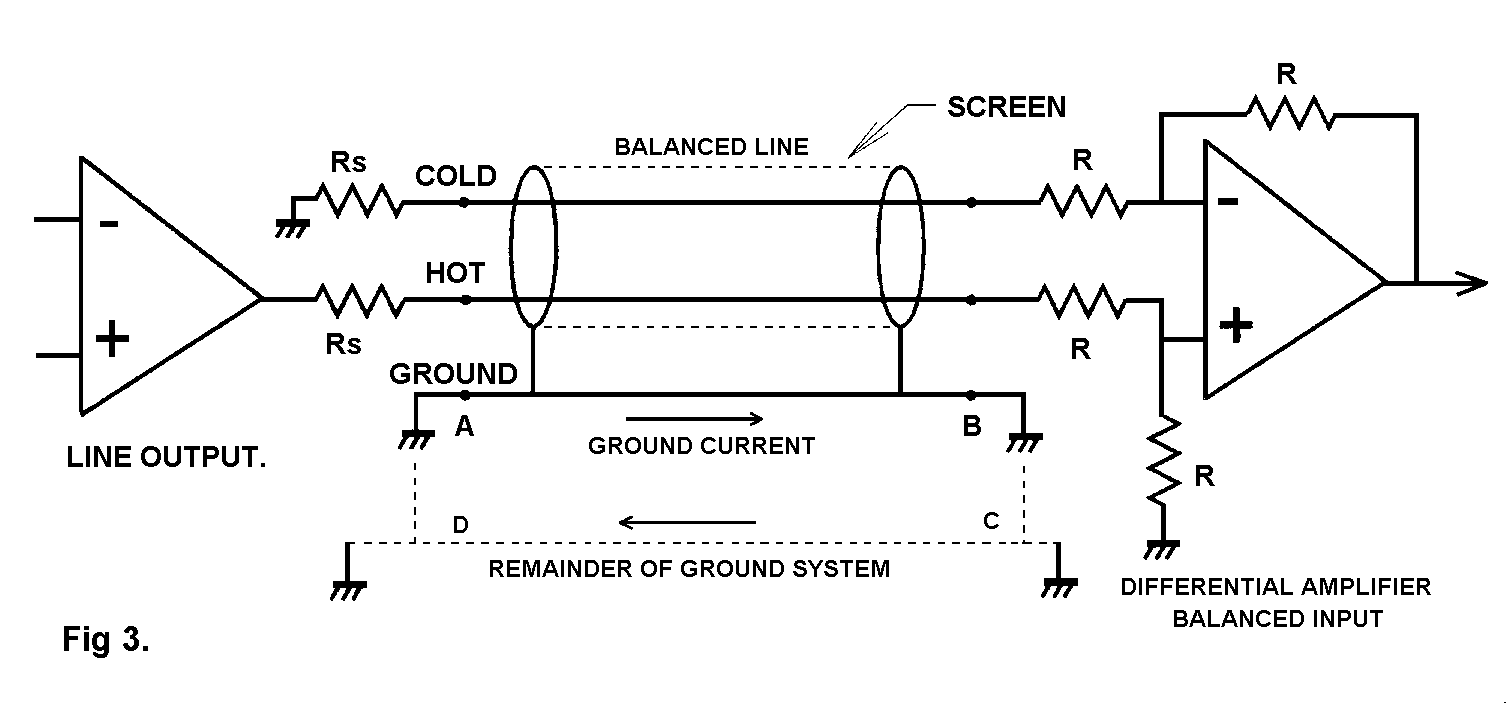Balanced inputs and outputs have been used for many years in professional audio, but profound misconceptions about their operation and effectiveness still survive. Conventional wisdom about them is sometimes wrong. Balanced Line Technology web page gives you a good look at the balanced line technology in audio applications. The balanced line technology is also applicable to many other fields as well. Here is one piece of information picked from the Balanced Line Technology web page.
Ground voltages coupled in through the common ground impedance; often called “common-impedance coupling” in the literature. This is the root of most ground loop problems. the equipment safety grounds cause a loop ABCD; the mere existence of a loop in itself does no harm, but it is invariably immersed in a 50 Hz magnetic field that will induce mains-frequency current plus odd harmonics into it. This current produces a voltage drop down the non-negligible ground-wire resistance, and this once again effectively appears as a voltage source in each of the two signal lines. Since the CMRR is finite a proportion of this voltage will appear to be differential signal, and will be reproduced as such. The most common cause of ground-loop current is the connection of a system to two different “grounds” that are not actually at the same AC potential

52 Comments
Tomi Engdahl says:
XLR are most often used for low-impedance balanced audio signals in professional audio equipment (recording, public address, broadcast) to minimise noise
Typical XLR cables are built with shielded twisted pair stock that has a characteristic impedance of about 110 ohms,
Typical XLR cables are built with shielded twisted pair stock that has a characteristic impedance of about 110 ohms, which is why that impedance was chosen for the original AES/EBU digital audio standard.
Tomi Engdahl says:
Modern microphones require an input impedance of between 1.2 and 5 kΩ, and most sound consoles, preamps and channel strips standardise on either 1.2 or 2.4 kΩ. A few preamps now offer variable impedance options that span the full range, but these are relatively rare. In impedance terms, there is unlikely to be any benefit at all in connecting your mics to channel strips rather than the mixer mic inputs. However, a dedicated channel strip may well have better-quality mic preamp circuitry and better EQ than a budget mixer, which may enable a better overall sound.
https://www.soundonsound.com/sound-advice/q-what-are-correct-input-impedances-guitars-and-mics